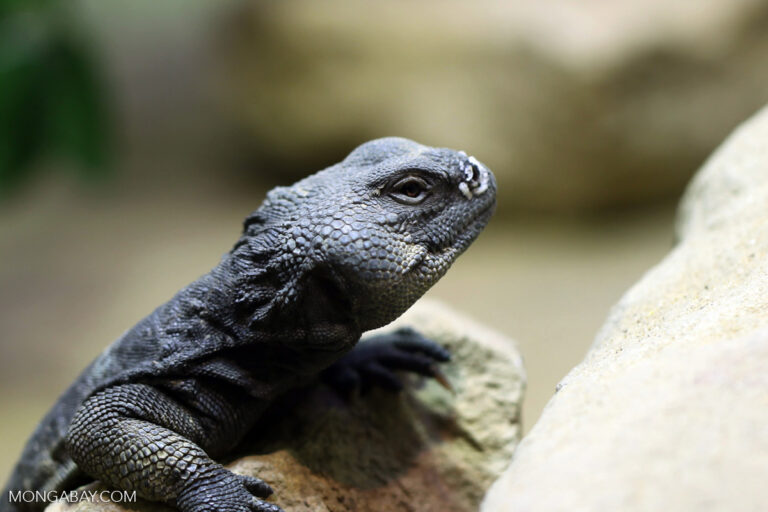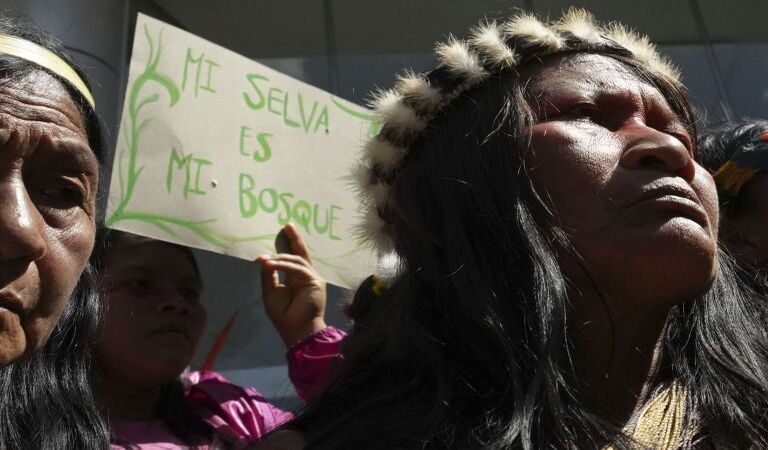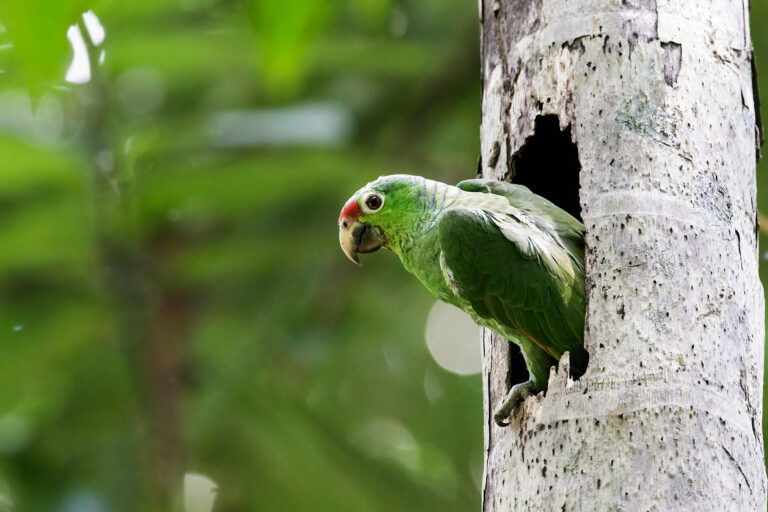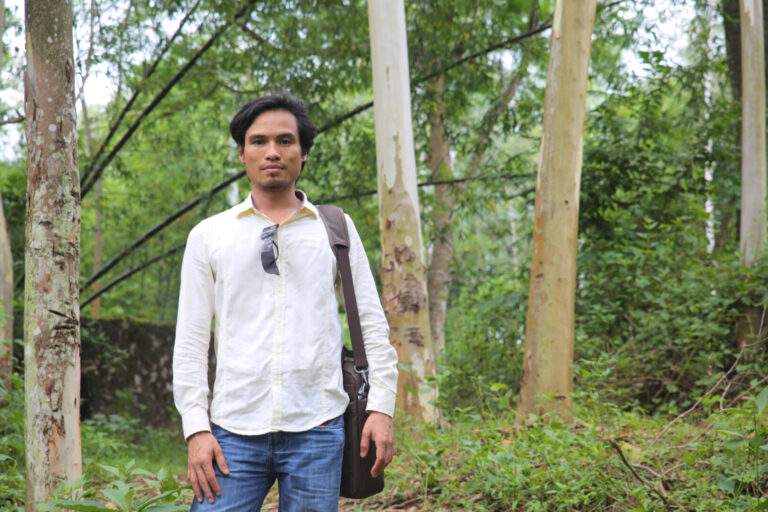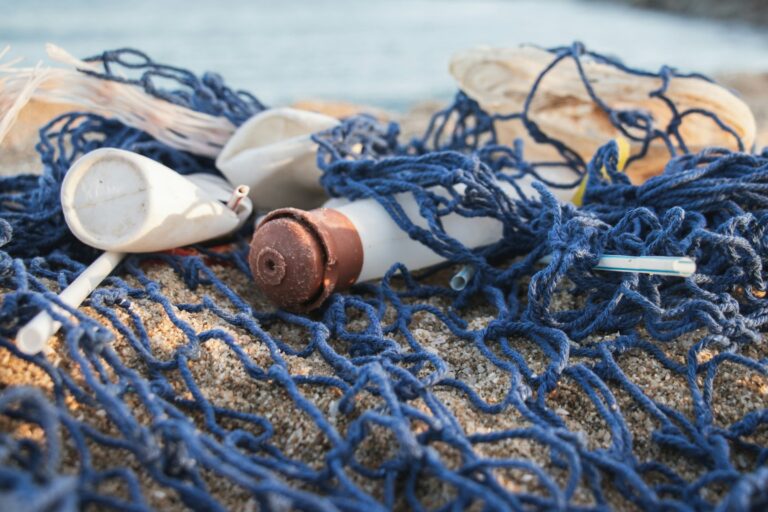- A potential gold rush is awaiting in the surroundings of the Mavicure Hill and the Fluvial Star of Inírida, two of Colombia’s particular ecosystems. Authorities approved 13 proposals for mining concession contracts for extracting gold and gold concentrates.
- Mongabay Latam and Vorágine visited the Indigenous communities surrounding the Fluvial Star of Inírida. Their residents now live in a climate of uncertainty because of the promises of a better future based on mining. There is simultaneously ignorance and enthusiasm about the prospect of new jobs.
- Mining has not started yet in the area, and there is already division surrounding this issue in the Remanso Chorrobocón Indigenous Reserve. Some people view mining positively, but there are also complaints that the mining titles are being managed in the name of the Indigenous people, even though they have not been consulted.
*This report is part of a journalistic collaboration between Mongabay Latam and Vorágine, a Colombian news source.
Cecilia García Barros is seated atop the peak of Mavicure Hill, a rocky, rounded mountain 170 meters (about 558 feet) high on the banks of the Inírida River in the Colombian department of Guainía. From there, one can see large expanses of land holding beneath it an abundance of gold and other metals sought by the mining industry.
García Barros, a member of the Puinave ethnic group, points to the mountain in the front. She says this was where Princess Inírida hid forever, according to García Barros’ ancestors. The mountain, called the Pajarito Hill, has a near-perfect concave shape and its surface is an intense shade of dark gray, which almost seems blue. This is a result of the sediments and granite that accumulated in the Earth’s crust over the course of 1.8 billion years.
Mavicure, Pajarito and El Mono, another nearby hill, are among the oldest rock formations in the country, according to studies by geologists at the National University of Colombia. In the tradition of the Puinave people, these archaic hills represent three siblings who were abandoned by their parents and who had to grow up in the distant view of their grandmother, a much smaller mountain on the other side of the Inírida River. They are rocks, but also a family of giants — a historical treasure that many Colombians do not even know they possess.

The geological past of Guainía is one of the reasons for its abundance of metals. A study by the United Nations Development Program (UNDP) on mining in the Indigenous territories in this department states that “the subsoil in most of this region is of Paleoproterozoic origin.” This era lasted 900 million years in the same time frame when the continents stabilized for the first time. These mountains may be some of the oldest on the planet, and this is why many are so certain that metals will be discovered in the area.
The Indigenous people from this area of Colombia — whose ancestors were here thousands of years ago — have been living on mountains of gold that have not yet been exploited by the West at a large scale. The Mavicure Hill’s surroundings are still virgin lands when it comes to the raging advancements of mining companies. This makes these lands a paradise: the same one that García Barros can recount from a legend that she knows by heart. This legend explains the worldview of the Puinave people; it is their way of relating to the mountains. García Barros says this landscape is the only inheritance left by her great-great-grandparents.
According to García Barros, Princess Inírida sought refuge on that peak while running from a group of men who fell in love with her during a party. At 480 meters (about 1,575 feet) high, no one has been able to climb this steep peak. Since then, while far from humans, the princess became the guardian of this ancestral land — but not for very long.
On July 30, 2021, the National Mining Agency of Colombia approved 13 proposals for mining concession contracts for gold and gold concentrates in the meeting hall of the Remanso Chorrobocón Indigenous Reserve. The reserve is in the area around the Mavicure, Pajarito and El Mono hills, near the community that García Barros calls home. The titles also include areas in the municipalities of Inírida to the north and Puerto Venado to the south.
 Remanso Chorrobocón Indigenous Reserve, Puinave Ethnic Group, Inírida, Guaviare.
Remanso Chorrobocón Indigenous Reserve, Puinave Ethnic Group, Inírida, Guaviare.
Controversial mining titles
Mongabay Latam and Vorágine contacted the Ministry of Mines and Energy regarding its position on the implications, consequences and possible risks or benefits of a potential gold rush in the region. According to the ministry’s communications office, Vice Minister of Energy Belizza Ruiz is the official spokesperson, but she had not yet taken office at the time of this conversation, so no statements would be made about this. They indicated that the issue would be managed by the National Mining Agency, the government body that fully manages Colombia’s mineral resources. The National Mining Agency is also in charge of monitoring whether the people authorized to extract nonrenewable natural resources fulfill their obligations.
The National Mining Agency sent a statement to Vorágine and Mongabay Latam stating that in the Remanso Chorrobocón Indigenous Reserve, one small-scale and 12 medium-scale gold mining titles were approved.
There is great hope in the community, but there is also a high degree of ignorance about the magnitude of what could come along with the arrival of mining companies.
According to Law 1666, issued by the presidency of the Republic of Colombia in 2016, mining titles in Colombia that are in the process of exploration or in the construction and assembly stage are classified into small-, medium- and large-scale mining “based on the number of hectares granted in the respective mining title.” According to the document, medium-scale exploration for metals, like the majority of the projects that were approved in the reserve, refers to projects covering 150-5,000 hectares (about 371-12,355 acres) per title.

However, the mining titles of projects that are in the extraction stage — which will operate in the Remanso Chorrobocón Indigenous Reserve in the future — are also classified as small-, medium- or large-scale mining, depending on the annual volume of maximum mining production. For open-pit mining, the extraction of gold and gold concentrates is considered medium-scale when it produces 50,000-750,000 tons of metal per year. For underground extraction, the production allowed is 25,000-400,000 tons per year.
According to the National Mining Agency, the titles were issued while taking into account the minimum requirements for environmental and labor suitability. The agency indicates that the legal proceedings will ensure the title holder conducts its activities “with strict adherence to the environmental mining guides adopted by the Ministry of Mines and Energy and the Ministry of Environment.” These titles are in the name of the Remanso Chorrobocón Indigenous Reserve Council, which is the name of the organization that requested them.
However, the ownership of these mining concessions is surrounded by controversy. One of the leaders of the reserve is Luis Alfonso García. He says the community has had two community councils since 2015, and this has caused division between the residents of the Remanso Chorrobocón Indigenous Reserve as they face the arrival of mining: Some have good opinions of mining and others do not. Alfonso García added that it is not the Indigenous people who have been managing the titles, since they would not have a way to do so.
“At no point have we been well-informed about how the situation will be. A man named Jorge Salinas, a corporate guy, is the one who has been attending to the issuance of the titles; he is who has been investing in the budgets,” says Alfonso García, who is part of the group of leaders who agree that legal mining should be carried out in the reserve.

According to Alfonso García, although the mining titles were officially granted to the Indigenous communities, the Indigenous people are not the ones behind the execution of the projects — and this is far from being a secret in the region.
Jenny Soad Rojas, the director of the Corporation for the Sustainable Development of the Eastern Amazon (CDA), tells Vorágine and Mongabay Latam there are clearly other interests, other than those of the Indigenous people, and those help finance gold extraction. “You know that gold mining is not for people without money. This [has to do with] very big investments, and the communities in this area do not have those resources, so we assume that there must be another type of force behind this,” says Soad Rojas.
Alfonso García also claims that on Aug. 22, 2022, there was a meeting between the community and the company that processed the titles on behalf of the reserve. During the meeting, an agreement was made with Salinas, who Mongabay Latam and Vorágine contacted via WhatsApp and a phone call. He referred us to a lawyer, who ultimately did not provide us with a statement, despite our insistence. “We told [the company] that in the community, we need an income to be able to support our families. We already contributed our lands, our richness; now we need a job — a salary,” says Alfonso García.
In contrast, there is a part of the community that considers the arrival of mining in the region to be a problem, mostly because it could trigger social conflicts. Some also fear that gold could attract armed groups. This group of leaders say they believe tourism can lead the way to opportunities that are scarce in the region.
Poverty: between a rock and a hard place
It is here — with a lack of opportunities and few resources — where the most complex issue surrounding mining in the reserve arises. Mavicure Hill is located in the municipality of Inírida, which is a three-hour boat ride from the urban area to the north, and 320 km (about 200 mi) from the border with Venezuela, to the east. About 2,000 Indigenous people live near these mountains, and most of them are part of the Puinave ethnic group. There are also people from the Curripaco, Piapoco and Sikuani ethnic groups, who have migrated from Guaviare, as well as a small number of Cubeo people from the department of Vaupés. The reserve is divided into settlements. The largest is Chorrobocón, with 1,200 residents. El Remanso is the second-largest, with a population of 300.
The reality of this lost paradise is that the Colombian government is like a ghost — a distant rumor that has never been seen. It is abandoned territory. Guainía, for example, has one of the highest multidimensional poverty indices in Colombia, according to 2020 data published by the National Administrative Department of Statistics. About 65.9% of people in this area live in poverty, far above the national average of 18.1 percent. The Remanso Chorrobocón Indigenous Reserve is the greatest example of this huge gap.

Until 70 years ago, the Puinave Indigenous people from this part of Colombia kept their traditions almost completely intact. According to a Puinave leader who would like to remain anonymous for personal safety reasons, this is when Catholic evangelization arrived and disrupted the Indigenous communities’ customs. The leader says social conflicts will come with the arrival of mining, and that the peace the Indigenous people have protected for centuries will disappear.
“First, the religion prohibited Indigenous dances. Until a short time ago, the guayuco was used, which is a traditional garment with a loincloth. The women did not wear bras. Catholicism changed everything. They said to the women, ‘If you dress that way, it is sinful; you could go to hell.’ And they scared people. And consumerism appeared, so in the reserve, they then had to buy clothing and products that did not exist here in the past. When the companies that extract gold appear, all of this will worsen,” says the Indigenous leader.

The anonymous Indigenous leader, who is 38 years old, has ochre skin, defined cheekbones and is about 5 feet, 5 inches tall. He says the region could be a sustainable tourism powerhouse. Limited groups of visitors arrive every week to explore the wonders of Mavicure Hill and its siblings, El Mono and Pajarito. They can also see other majestic landscapes like the Fluvial Star of Inírida, a humid labyrinth where the Guaviare, Atabapo and Inírida rivers cross each other. These rivers form a single whirlpool of water that joins the Orinoco River on the border with Venezuela.
Tourists go on tours that sometimes seem magical. One of them is a visit to an area called Matraca, which is home to the common kingfisher. This bird has blue wings and an orange chest and is known as the Martín pescador in Spanish. In this area, tourists in small boats can approach Risso’s dolphins, which then jump above the surface as if waving hello. When the water is still, the dolphins can appear out of nowhere, using their pearly fins to draw imaginary arcs in the air.
Several Indigenous people from the area see opportunities in this sector of the economy — regulated, conscious tourism — that many years and various governments have denied their family members. It is not easy to live in El Remanso.
This small village can only be accessed by a three-hour trip on the Inírida River. The 300 people who live in El Remanso rely mainly on fishing to survive. Over the summer, the men go out in canoes every day to search for fish like tilapia, catfish, bocachicos, half-banded pike cichlids, dormilones and tambaqui (Colossoma macropomum). During winter, they search for jawfishes, palometas (Trachinotus goodei) and mullets. However, healthy fish are becoming harder to find. According to Soad Rojas, the CDA director, a study soon to be published reveals that the fish from this part of the river have higher mercury concentrations than the limit allowed. They are a reminder of the problems left behind by illegal mining.
The diet of the Puinave people is based heavily on yuca brava, or cassava. When processed, this tuber is turned into products like mañoco and casabe. Mañoco, or cassava flour, is a granulated food that can be mixed into juices or eaten by itself. Casabe is a type of unleavened bread (or tortilla) that can be eaten with all different types of food. However, not many other foods are grown in El Remanso, since the land is not very fertile. Pineapples, cashew trees, ahuyama squash, pacay trees and ají peppers are among the few that grow when planted. Most other foods need to be brought in from Inírida: fruit, vegetables, chicken, other meats, legumes, oil, sugar and salt are incredibly precious items, a paradox for an area so rich in gold.

Children in El Remanso attend school only until 5th grade, since their small school does not offer more levels. If a student wants to continue their secondary education, they must go to live in Inírida. This does not include university. García Barros, for example, could only study up until 9th grade — out of the 11 grades that Colombia’s secondary education system offers — because she did not have relatives in the town. “To get ahead in Inírida, you would need to sleep on cardboard because you need money to pay for [somewhere to] stay while studying,” says García Barros. Another person who was interviewed left the reserve and earned a diploma after several years of difficulties. Their childhood goal was to learn Spanish, as a gateway to Western knowledge and opportunities. Nobody studies in Puinave.
One of the Indigenous leaders of the reserve who spoke with Mongabay Latam and Vorágine says being born in El Remanso means having the odds against you. This leader managed to attend university and graduate. His education has given him perspective on the world, and his disillusionment has driven him to question the arrival of gold mining in the region. He still tries to put himself in the shoes of those who support mining, because in this community, the issue of hunger is urgent.
What is rarely discussed in El Remanso is what has happened with gold in other parts of the country and the world: The companies get the lion’s share. Whatever is left goes to the local miners.

Mavicure is a reserve area
The hills were so sacred to the ancestors of modern Puinave people that there were certain places that could not be visited. Grandparents warned their grandchildren that the Earth spoke when it felt abused: “They would say to you, ‘Do not go over there because something could happen; it could even bring on the rain,’” says another leader. In winter, this leader could only fish for a few hours because noises could be heard after that. It was like a message that indicated the work shift had ended. Before leaving, the Indigenous people would leave offerings on the hills: Often a piece of cassava cake would be left as a gift to the Earth. Many have kept this custom alive.
Soad Rojas says the Mavicure Hill is in the forest reserve zone of the Amazon (created by Law 2 of 1959) because of the territory’s biological characteristics. “Various studies have managed to identify a large number of species of mammals, reptiles, amphibians, birds, plants and trees of priceless importance for the country,” says Soad Rojas.
In fact, in order for the 13 projects connected to these mining titles to begin the extraction stage, those who requested the titles must negotiate the deduction from the reserve in these specific areas with the Ministry of Environment. Mavicure Hill itself is within the perimeter of the Guiana Shield. This is one of the world’s oldest geological formations and includes parts of Colombia, Venezuela, Brazil and the Guianas (Guyana, Suriname and French Guiana). The Guiana Shield covers more than 2.7 million square kilometers (more than 1 million square miles), approximately 13% of the land in South America.

The Fluvial Star of Inírida, which borders the area surrounding Mavicure Hill — to the northeast, close to the urban area of Inírida — has special international protection. In July 2014, this national treasure was declared a Ramsar site by the federal government. This means that mining projects cannot be developed in this area because its environmental value was is on a global scale. Ramsar sites must be legally protected.
A study by the World Wildlife Fund (WWF) in Colombia, the Omacha Foundation and the CDA — edited by Fernando Trujillo, José Saulo Usma, and Carlos Lasso — highlights the extraordinary conditions of the Fluvial Star: “It forms part of the savanna ecoregion of the Amazon in Brazil, Colombia, and Venezuela. [It is] an exclusive area in Colombia with uncommon soil and geological conditions that maintain the highest levels of endemism and diversity.”
For all these reasons, many have doubts and reservations about the mining titles in the Remanso Chorrobocón Indigenous Reserve, close to the Fluvial Star of Inírida.

One of the leaders who was consulted said the people have not even seen the documents in order to know what was negotiated with the companies that took out the titles. “I go there every week and ask them, but there is total ignorance,” says the leader. “The communities aren’t told what the consequences of this will be — for example, the social issues, the pollution [and] how the affected areas will be recovered. The Inírida River, for now, is free of dissidents [armed groups from the Revolutionary Armed Forces of Colombia [FARC] that did not obey the 2016 Peace Accord]. I ask myself: What will happen when the mining begins?” he adds.
Mauricio Cabrera, a researcher from WWF, says the concern surrounding the mining titles that were approved in the Remanso Chorrobocón Indigenous Reserve is not insignificant, given the results of several studies conducted by the organization. “We believe that there are no enabling conditions for mining activity to be developed there; this has to do with indicators of governability and governance in the Amazon. This could cause social, economic and environmental problems. These are processes that have already been lived in other parts of the country, on top of the ethnic and community problems that may be exacerbated at other levels,” says Cabrera.
Cabrera adds that this does not mean it isn’t important to seek out formalization mechanisms — under certain environmental impact conditions — directed at communities that have historically been involved in artisanal mining.

All of this is occurring in a context that is unfavorable to the environment when it comes to issuing mining titles in Colombia. The legal system surrounding mining is fragile. The State Council recently made a historic ruling that requires the Colombian government and the National Mining Agency to correct gaps in the law. In many cases, these gaps are detrimental to the conservation of strategic ecosystems and protected areas.
For this reason, ecotourism has become an alternative activity, although it lacks committed support from the Colombian government. García Barros, for example, has spent four years as a guide at Mavicure Hill. To give her coworkers a better opportunity, she only accompanies tourists once a month. She earns about $15 for this work, almost nothing given high local prices for food.
In the middle of so much uncertainty, the legends of the Puinave people could be wrong in predicting that their ancestral land can be preserved as a treasure trove full of biodiversity for humanity. The legend of the princess that García Barros has been telling is, in and of itself, a story full of adversity. When Inírida went to the party, the men of the community were captivated. It is said that she was a strangely beautiful young woman: Although she had white skin, she had the eyes and facial features of the Indigenous people of southern Colombia.

In order to make Princess Inírida fall in love, one of the men visited a wise man on the reserve to ask for a potion prepared with a plant called puzana. If the princess drank it, it was said that she would fall madly in love with the man.
As the party ended, Princess Inírida drank the potion. She did not fall in love. On the contrary, the princess went crazy, undressed and ran away to hide forever on Pajarito Hill. This is the version of the legend that García Barros tells. The princess never emerged from that place again. The flor de Inírida, or Inírida flower, is the area’s only reminder of her.
The Puinave people believe that Princess Inírida manifests her presence and looks after the territory via an herbaceous flower with stiff red and white petals. This plant has the ability to grow and cling to the ground in extreme conditions. It goes through life with difficulty, just like most of the people in El Remanso.
Banner image: In 2021, the National Mining Agency approved 13 gold mining titles in the area surrounding Mavicure Hill, a reserve area. Local Indigenous people do not know which company is behind this medium-scale project. Image by José Guarnizo.
Editor’s note: This article is part of the project “The Rights of the Amazon in Sight: The Protection of Communities and Forests,” a series of investigative reports about the situation surrounding deforestation and environmental crimes in Colombia, funded by Norway’s International Climate and Forest Initiative. Editorial decisions are made on an independent basis and are not based on donor support.
This article was first reported by Mongabay’s Latam team and published here on our Latam site on Nov. 24, 2022.






